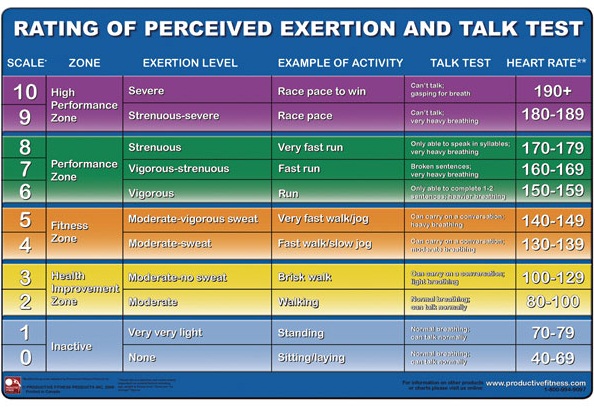If your goal is to lose weight or gain fitness there is that question mark over whether you’re working in the right zone.
There have been so many contradictory theories over the years as the most efficient zone to be in for a different workout, but without getting too scientific if you want to burn an amount of calories, then the harder the workout the shorter the length of the session.
Of course, if you are training for a specific event then there will be training phases between recovery and working weeks, alternating different energy systems…but how do you know if your training is actually giving you the results you are after?
If you are just newly embarking on a fitness routine (hello summertime and bikini weather) then it can take a little longer to see changes (4-8 weeks) as your body has no base or ‘memory’ to call upon. Changes to your body shape such as a flatter tummy or small thighs are a great way to tell if the workout is going places. If you actually feel stronger and faster but without any structural changes then this is probably due to improved neuromuscular efficiency. This is achieved in two main ways
1. Muscle fibre recruitment: The central nervous system (brain and spinal cord) learns to recruit more muscle fibres in response to the challenge of lifting heavier weights.
2. Rate Coding: The central nervous system sends faster signals to the muscle fibres so they contract more quickly and more forcefully.
If this is all you want to achieve from a workout then that’s fine and dandy but if you really want to see changes then increasing the intensity of workouts or the weight you lift will help you look and feel fitter.
Simple ways to check if you are working out hard enough
1. Wear a heart rate monitor – If set correctly, heart rate monitors never lie and can help with those that are just getting into fitness to get a feel for where they should be within the workout. The goal is to push the heart rate towards its maximum ability without overworking it. Cardio is broken into four zones with 60 to 70 per cent of resting heart rate as “recovery,” or light exertion, 70 to 80 per cent for aerobic exercise, 80 to 90 per cent for anaerobic exercise, and 90 to 100 per cent for red line (max exertion).
To find your heart rate, place the index and middle finger over the carotid (neck) or radial (wrist) artery and count the pulse for ten seconds. Multiply that number by 6 to get the base bpm. If you have a smart phone there is a super simple instant heart rate app that takes your pulse by placing your finger over the camera (I have to remove protective case). To gauge, your max heart rate deduct your age from 220.
2. Do the talk test. By no means is this a groundbreaking method but it does give you a general sign of where you’re at. At low intensity, you can carry on a conversation or sing the alphabet while exercising (yes I have been known to do this while pushing the pram when in need of a diversion). Moderate to high intensity is when you can’t carry on the conversation without pausing and high intensity is having no chance at all to talk or you will have to stop (usually around 80%).

3. The rate of exertion – whether it is a scale 1-20 or 1-10 if you’re exercising for health you should aim to have your workout in the middle range of the scale. If you’re an elite athlete they will typically be in the 75% – 80% range.
Of course, if your habits around diet and nutrition are off kilter then it won’t matter how much you exercise, the scales won’t show for it. So there you go, different goals for the different working zones, it is now just up to you to decide which one you want to take up.
Related Images:





